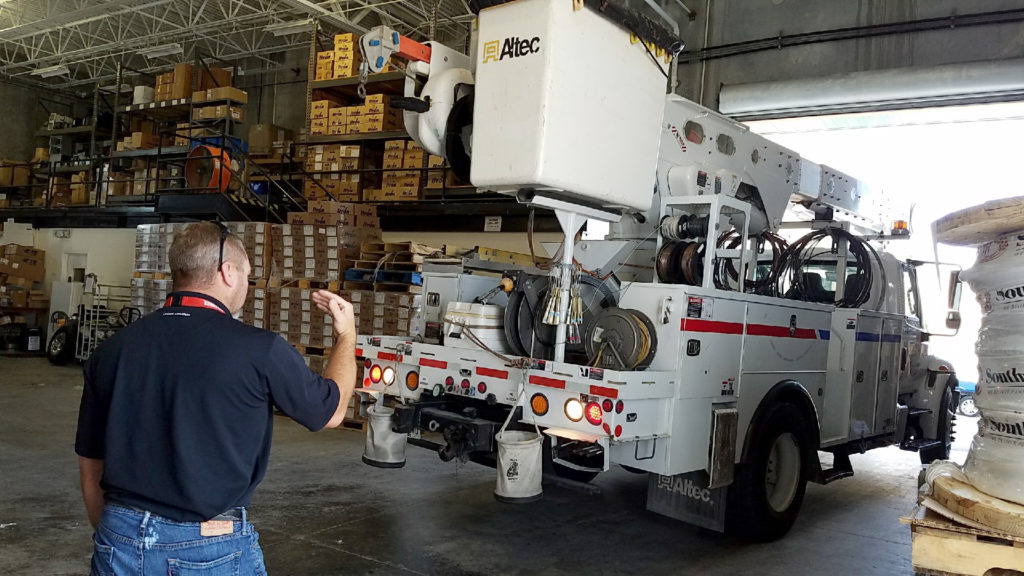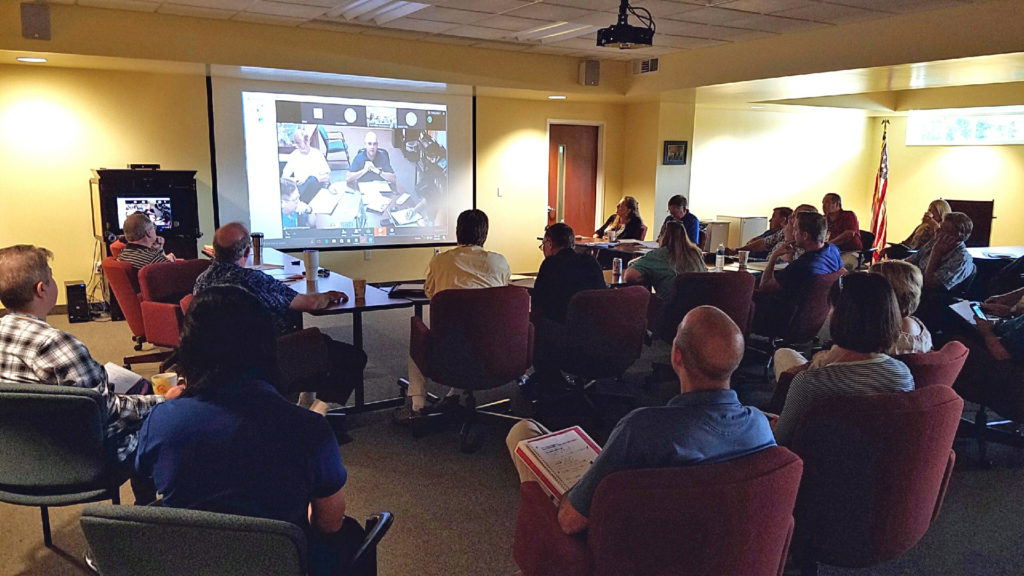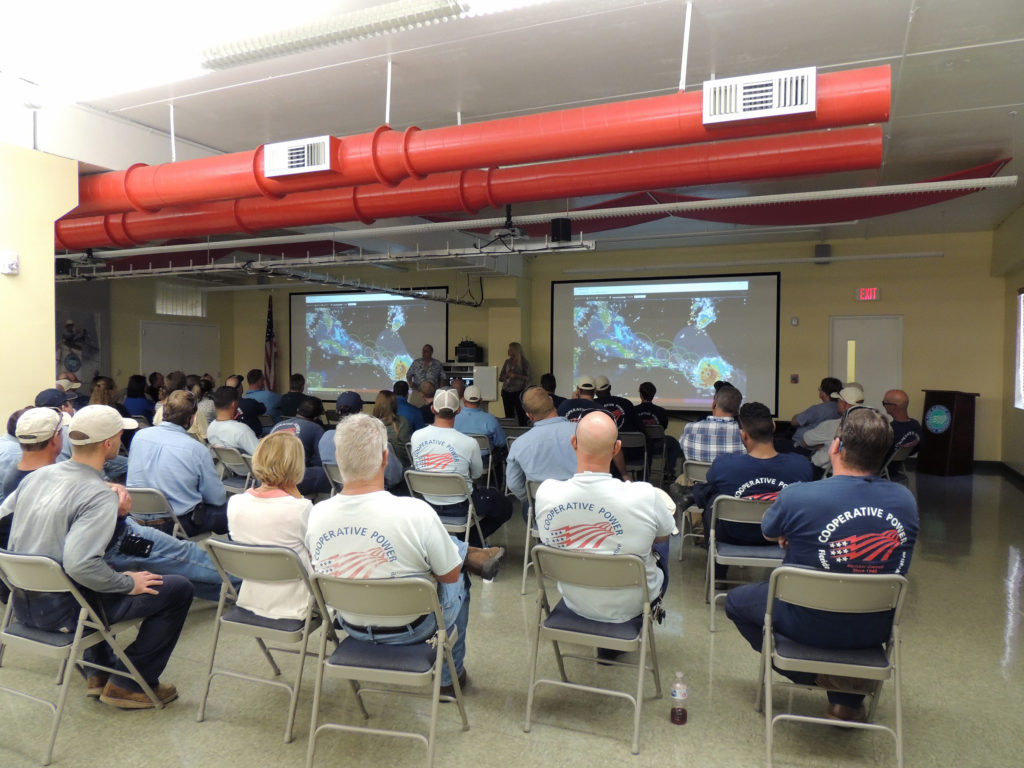
As Hurricane Irma churns through the Caribbean at 185 mph toward a potential landfall in the United States, electric cooperatives are well into their storm preparations.
Florida co-ops are putting emergency plans into place, including Florida Keys Electric Cooperative, which expects a mandatory evacuation as the hurricane draws near this weekend.
“Our offices will close at the end of the day and stay closed for the duration of the weather event,” CEO Scott Newberry said Sept. 6. “Over 80 of our employees out of 115 are planning to evacuate.”
Clay Electric Cooperative, based in Keystone Heights, is among others well into disaster prep. It is implementing its emergency operations plan knowing that many contract crews needed for power restoration are already committed to Texas and Louisiana following Hurricane Harvey.
“These steps are to ensure we remain ahead of the curve, because this storm’s projected path will obviously affect multiple utilities, causing outside resources to be limited,” said Clay Electric General Manager/CEO Ricky Davis.
While Irma’s exact trajectory fluctuates, the National Hurricane Center says it should be located between the Florida Keys and Cuba early Sept. 10. It’s projected to be a Category 4 hurricane at that time.

The storm is blamed for at least 10 deaths as it has cut a path of devastation across the Caribbean. NRECA International is watching closely as Irma is expected to skirt the northern coast of Haiti. That’s where NRECA International runs the Pilot Project for Sustainable Electricity Distribution, a generation/distribution utility commissioned by the U.S. Agency for International Development.
In advance of Irma’s impact, NRECA International is shutting down the power plant, boarding up the office and control room, and moving vehicles and materials to the utility’s warehouse. NRECA International staffers are sheltering in place in the northern city of Caracol.
“The distribution system was not designed to withstand a Category 4/5 storm, but we are taking all the necessary steps to minimize the time required to bring power back on after the winds have subsided,” said Dan Waddle, NRECA International vice president.
“We have been in close contact with USAID staff and our team on the ground. Once the storm passes, we’ll assess the damage and start bringing power back to the communities.” Since the inception of the Haiti project in 2012, 56 volunteers from America’s electric co-ops have traveled to Caracol to help build the distribution system that serves nearly 10,000 consumers.
Once it reaches the U.S., Irma is expected to test systems like Florida Keys EC, which serves 33,000 meters from its Tavernier headquarters, that were redesigned in the wake of past weather events.
The co-op’s storm-hardening program ramped up following the 2004 and 2005 hurricane seasons, when it dealt with seven tropical weather systems in less than two years.
A warehouse and service center at Marathon was built to Category 5 hurricane survivability standards, and efforts to harden transmission and distribution circuits became part of the co-op’s strategic plan.
Within two years, plans to consolidate four buildings at the co-op’s headquarters in a single storm-hardened facility evolved, and construction began on the co-op’s new headquarters. Most of the facility is built beyond Category 5 standards and is engineered to withstand sustained winds topping 156 mph.
Newberry said a skeleton crew will remain in place at the co-op’s headquarters until medical care and other public safety services are no longer available in the Florida Keys.
“We’ve ordered in 72 hours of emergency food and stored it in our commercial kitchen-sized freezer and coolers,” said Newberry. “Trucks have been moved inside the warehouse, and the emergency generators are fueled and ready to go.”
The co-op will use text messaging, emails and social media to keep members informed of restoration plans and progress once weather conditions improve.

Newberry has pending requests for up to 300 restoration staff, including contractors and mutual aid from electric co-ops and other sources. But Irma’s uncertain track and its potential to cause damage across the state of Florida could delay or impede full help from arriving.
“We’re already in the process of lining up distribution and transmission crews and substation help, but a lot of other utilities across the state are doing the same thing,” said Newberry. “There’s a limited supply of people, and this could potentially be the worst storm anybody’s seen in decades.”
Derrill Holly is a staff writer at NRECA.